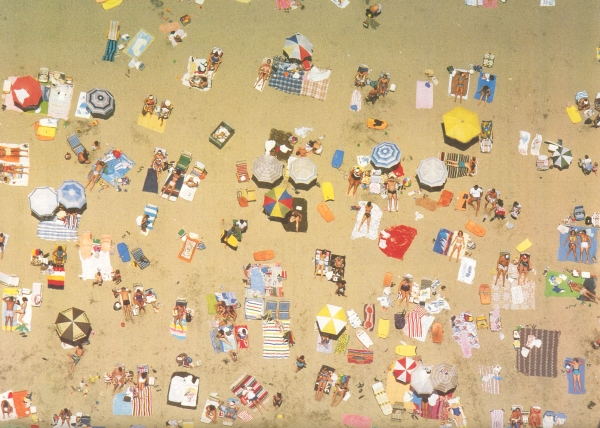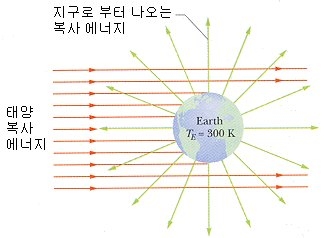Radiation
Places close to the stove feel warmer than places farther away. This is because heat is transferred directly from the stove without any movement of material. This phenomenon in which heat is transferred directly without the aid of a substance is called radiation.
When using an infrared therapy device or cooking in an oven, heat energy is transmitted by radiation.
It is almost a vacuum between the sun and the earth, but the heat is transferred to the earth, indicating that heat is transferred by radiation.

Earth's radiative equilibrium
The Earth's temperature remains constant only when the Earth radiates the same amount of radiant energy it receives from the Sun. This is called the Earth's radiative equilibrium.

Greenhouse effect, global warming
Any object that has a temperature emits radiant energy in the form of light (electromagnetic waves). The higher the temperature, the shorter the wavelength of radiant energy, and the lower the temperature, the longer the wavelength.
The sun has a surface temperature of about 6000K and mainly emits visible light. As we know it, The Earth's surface temperature is lower compared to the Sun. The light emitted by the Earth is mainly in the infrared region.
Because the wavelengths of radiant energy exchanged by the Earth are different, the temperature at which radiative equilibrium occurs may vary. For example, when a lot of carbon dioxide or methane gas is released into the atmosphere due to human industrial activities, infrared rays emitted by the earth are absorbed by the atmosphere.
This greenhouse effect increases the average temperature of the earth. This is called global warming.
Global warming causes climate change, extreme droughts and floods, damage to crops, and diseases, which can be a problem for humankind.
* Thank you to Mr. Jong-Ok Ahn for verifying the error in the text above.